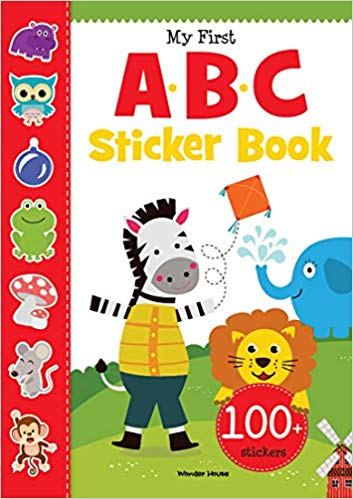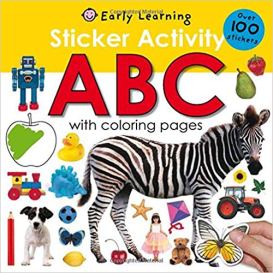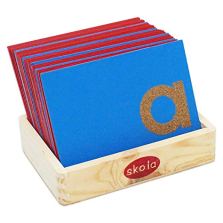How To Teach The English Alphabet To Your Child
- Eniokos

- Mar 16, 2023
- 6 min read
Updated: Jun 24, 2023
Teaching the alphabet of any language is the first step in the journey of literacy skills and to set young children on the road to reading success. There are four separate areas to cover while teaching the alphabet.
Knowledge of letter shapes, orientation, and directionality.
Knowledge of letter names.
Knowledge of letter sounds both individually and in combination.
The ability to write letters.
Now when you, the parent, begin to teach the alphabet few doubts may arise in your mind. Do I teach letter names or letter sounds first? Do I teach uppercase letters or lowercase letters first?
Make a plan!
It is highly desirable to do one’s research, clear one’s doubts and plan out the goals and steps before embarking on teaching your child. If we teach something wrong, then we have to later try to get him/her to ‘unlearn’ it and tell them, that was incorrect, here is the correct thing! However, there are many schools of thought, and as long as the approach is based on solid scientific evidence as to how humans learn languages, spoken and written, you could pick any and succeed.
The goal in language teaching is two pronged – one is the spoken language and comprehension of what is heard, and the other aspect is the written depiction of language (script, letters, alphabet) and reading that depiction. This post is in regards to teaching the English alphabet, but there are many commonalities among the approaches to teaching the alphabets of various languages.

Set Goals
An important thing is to set realistic goals for yourself and your child. For small children, the pace of learning and skill development can vary greatly. Don't compare your child to any other child. It is a good idea to know what are you aiming for. If there is a pressure of the schooling system, then it is a good idea to find a balance between what is the curriculum set by the school and what are your child's age and capabilities at the present time. In general, the main goals of teaching alphabet at the earliest level are:
The child should be able to recite or sing the alphabet
The child should be able to identify and match uppercase and lowercase letters
The child should be able to identify the sound of each letter (phonics)
It is not recommended to teach writing to very small children before their fingers are ready. However, you can teach the child to trace letters. Use chunky markers or pencils if the child is interested in writing, if they are very small. Later, the child can learn writing with normal pencils.
Phonics Rocks
Most of the research in the field suggest to teach, first, the sounds and shapes of the entire alphabet., postponing letter names and capital letters. So, for the letter B, the name of the letter is “BEE” but its sound is /b/ and we use the sound /b/ in reading a word with B – like ball. The name “BEE” is of no use to read a word. Similarly, W is called “double-u”, while its sound is denoted by the sound /w/. Since we do not read using the letter names, they provide no real purpose for the early reader. Therefore, the sounds need to be taught first.
Lowercase First
Educators also suggest to teach lowercase letters first. Upper case letters have minimal connection to early literacy skills; 95% of written text is in lower case letters. My daughter showed an interest in learning the alphabet at around 2 years 9 months. Her early learning journey was totally led by her interests and abilities. I introduce topics but if I see that she isn’t grasping it or showing interest, then I leave it for the future. So, when I observed she is ready, I started with letter shape, its name and its sound simultaneously.
12 Strategies That Work
Not the same approach will work well for every child. Depending on the child's interest and personality, some approaches will work better for a child but may not be effective for another.
1. Alphabet Peg Puzzles
Wooden peg puzzle tray available with various brands are not only good for an interactive learning but they also help to develop the pincer grip.

2. Magnetic Letters and Magnetic White Board
There are numerous ways magnetic letters can be used - same case matching, lowercase-uppercase matching, beginning sound matching, etc. Also just sticking them on refrigerator sparks an interest in the child to play and thus learn with them. Make sure the magnets are tightly affixed and do not cause any choking hazards.
3. Letter Treasure Hunt
Letter treasures hidden in rice or around the house with clues of location from the parent. Or you can just put the plastic letters in water and let the child fish each out as you call out the name. Children love sensory activities and learn faster through them.

4. Instruction Cube Game
Rolling instruction cube with letters in the pockets of the cube and finding the letter that comes on top from the scattered letters. This method is particularly great for kinesthetic learners.

5. Matching Letters
Matching letters with beginning sounds of objects in first words book.
6. Alphabet Chart
Putting up an alphabet chart or poster is a great way for children to observe and learn any time they want. Best for visual learners.

7. A-B-C Song
If you want your child to memorize the English alphabet, then the A-B-C song is a great idea. It is good to tell the child that the name of the letter is "A" while showing the letter physically using a jigsaw peg, flashcard or any other manipulative. The name is "A" and it sounds like /a/. This is a method using which my niece learned both letter names and phonics simultaneously.
8. Reading Alphabet Books
Board books with single letter in only one case in each page, the book Chicka Chicka Boom Boom and just reading good minimal text picture books are great ways to develop interest in the written text. Also, research has shown that children develop more skills and interest in reading if they are surrounded by books. If the household has books, newspapers, etc., the child is likely to get interested in understanding them. The moment they can recognize a few letters, they are able to recognize them in other contexts like on a carton of cereals, or on a newspaper, and they are excited to see and recognize the letters.
When is the right time to start reading books to kids? As soon as they are born! You can read more about the benefits of reading aloud to kids here. If you are wondering which books are good for babies and toddlers, check out this post.
9. Printables
There are lots of free awesome printables available on different websites for teaching the alphabet and letter sounds through different techniques like matching, roll and cover, clip cards, etc. Just download, print, laminate to make them reusable and you are good to go!! I have mentioned few of the websites at the end of the post.
If you are a subscriber to our site, you can download all the freebies we have from your Subscriber's page. You can subscribe here.
10. Colouring
This can be done with just writing letters on a piece of paper and let the child colour inside the letters. Also coloring books based on alphabet are available.

11. Stamping
A stamp pad, upper case letter stamps, and a sheet of paper with lowercase letters written on it…a fun way to learn the alphabet!!

12. Sticker Books
Who doesn’t love stickers?? The interactive element of sticker books is great for teaching kids through fun.
13. Sandpaper Letters
By tracing over the textured letters with their fingers, children understand the shape, form a visual memory and associate symbols or letter shapes to the sounds which sets the base for reading & refines pre-writing skills. It is a wonderful method which uses visual, muscular, auditory and textural senses, to reinforce alphabet shape and sound. Link for the product below here.
14. Teach the Child Their Name
Kids are very excited if you teach them their name using letters while explaining the phonics. They are always interested in their own name! And it creates a correlation in their mind that these symbols are used to depict sounds and words, when they see the application of the idea. You can proceed to write out the names of the child's friends, the parents' names, etc. Small kids also feel very happy when you first spell out and teach them ma, mum, or whatever the child calls their mother.

I hope you will find this post helpful. Remember to take it slow, follow the child’s pace and keep it fun!
This post contains Amazon affiliate links. By purchasing through these links, you help support our content at no additional cost to you. Thank you for your support!
































